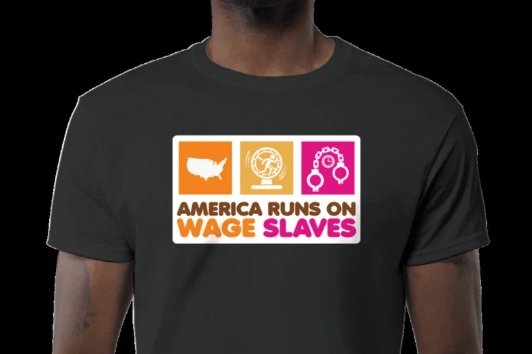
blogfyre
What a silly name for a blog.

Marvel Just Broke Marketing
There is this belief, nay, a misunderstanding, that the key to social success is posting the right thing. That, if one were to identify the perfect post, the views and engagement would come in droves. If you, dear reader, hold this belief, buckle the fuck up. I’m about to prove you wrong and blow your mind with the help of cinema giant, Marvel Studios. (Disclaimer: You do not need to be a Marvel fan or care about the MCU to read the rest of this blog.)

What Chain Emails Knew About Impressions
If you're familiar with the sounds of dial-up internet, I'm certain you remember chain emails. The misspellings, the vague threats, the excessive capitalization. It was a simpler time in our digital world when we weren't so averse to the occasional spam message in our inbox. But like, what the hell was that? In fact, why the hell was that?
Chain letters have been around literally since the dawn of human history. Historians believe many early examples have been lost to time, but here's an NPR piece about a chain letter from 55 AD. From physical letters, to pamphlets, to the invention of Hotmail, the simple chain letter has been one of the most prevalent forms of mass media. That's honestly kind of crazy considering most chain letters have no way to generate return.

Inflation is rampant on Social Media
On social media, 6,000 is just north of nothing. TikTok users can’t even join the Creator Rewards Program until they have 10k followers. On Instagram, follower counts are displayed as an exact number until they surpass 10k. To make another real world connection, that’s a few hundred more than the capacity of Red Rocks Amphitheatre, which is 9,525.
The point of these figures is to show how skewed our perspective of “a social following” has become. In the 20+ year history of social media, the quantitative goal post of influence has only ever been pushed back. Unfortunately for everyone trying to kick that field goal, growing a social following hasn’t become more accessible. I’m not saying that social growth is “too hard” or “impossible,” I’m saying it’s not accessible. Why is that? Because of inflation.

Kendrick Lamar Proved My Point About Paid Advertising
Budweiser, Hotels.com, Marvel Entertainment, and Coffee Mate, paid LITERALLY MILLIONS OF DOLLARS for a 30(ish) second advertisement. Kendrick Lamar did a 12-minute halftime show for effectively free. What have you seen more discussion about on social media today? The ads? or Kendrick Lamar?
If you're social media looks anything like mine, and I'm willing to bet it does, you're seeing a lot more Kendrick discourse than discussion around Willem Dafoe playing pickleball. Do you even remember Willem Dafoe playing pickleball? I'll straight up Venmo you a dollar if you can tell me which brand's commercial focused on pickleball without googling it.

The Masks We Post
My name is Matt Cole and I am addicted to the internet. Or at least that's what I tell people when I don't feel like explaining that "the internet" is my job. I'm not actually addicted to the internet, but I do think I spend to much time here. That's why I spent some extra time this week offline. I recommend you do the same. As the kids say, "go touch grass."
If you follow me on TikTok, hearing that I was offline last week may be surprising. If you don't follow me on TikTok, (shame) you likely don't know that I posted every day last week. Outside looking in, these two facts may seem at odds. But allow me to rip the wool from your eyes and explain that "posting" and being "online" are different and not mutually exclusive.

The Future of TikTok
When it comes to posting content on the internet, for marketing, entertainment or anything else, the creator is at the will of the platform. While that can be a hard pill to swallow, it’s a pill you have to get down. The internet wasn’t built for your benefit, it also does not care about you. I’m sorry I had to be the one to tell you, but I hope it helps.
I hope it helps because it should take some of the sting out of these cataclysmic digital shifts. TikTok going dark and (potentially) selling out is nothing personal and it has nothing to do with you. These changes come and go and the best thing you can do is prepare for the next one. How do you prepare? You create your own footprint.

Screen Time: You Get What You Give
To quote prolific 90’s band New Radicals, “We only get what we give.” Now, whether you have the dreamer’s disease or not, this statement holds true and is the perfect conclusion to our blog series on screen time. No one ever expects the double New Radicals reference.
Over the course of this blog series, we have not only defined “screen time,” but we’ve also explained the “Algorithm” and how you can control it. That’s all well and good, but how does it pertain to the New Radicals? Good question.

This Is Nothing #2
Please stop spamming my inboxes. It will never, ever work. It will, however, continue to give me a reason to write this blog series. Today’s blog is about Followers.com. They emailed me last week asking if I would like to “Join Our Nerdy Podcast Revolution Today!” In our last issue, I needed to do some Googling before I cast my judgment. This time around, I can tell you up front that this is Nothing.

Screen Time: On TikTok
TikTok is, far and away, the MOST linked to a user’s screen time. While screen time is a factor for Facebook, Instagram, LinkedIn and YouTube, it takes a back seat to user experience. On TikTok however, screen time IS the user experience. When a user opens TikTok, there is no blank space. There is no landing page or home screen, no sign posts and no welcome mat. The moment a user opens TikTok (and maybe after an ad) they are fed content. And, to be clear, that isn’t necessarily content made by someone they know or follow. In fact, it’s more likely that the first video is from an account the user does not follow.

Screen Time: On YouTube
If your strategy involves posting to YouTube, understanding the inner workings of the site are imperative. While you may be able to stumble into moderate success on a platform like Instagram, LinkedIn or TikTok, you will find zero, and I do mean zero, success on YouTube without this knowledge. YouTube demands strategy and a meticulous approach across multiple steps. If someone has ever told you that YouTube is easy, they lied. YouTube is the Big Leagues, kid.
The first thing to note about YouTube is its absolutely massive scope. YouTube fits into conversations about social media outlets just as easily as it does into conversations about cutting traditional cable television. Not only do you have short-form and long-form user generated content, you have live streams, live television, professional sports broadcasts and feature films. The most subscribed to channel on the platform has 64.7 billion views all-time. The second most subscribed to channel is an Indian music label. Number three does exclusively children’s nursery rhymes.

Screen Time: On LinkedIn
LinkedIn is like the world’s most professionally dressed flea market. You’ve got a core group of users recycling the same concepts day in and day out. Also, much like a flea market, LinkedIn is somehow both everything and nothing all at the same time. Need to connect with your coworkers? LinkedIn. Need to grow your thought leadership? LinkedIn. Need to find a job? LinkedIn. Need to announce your new job? LinkedIn. Is LinkedIn optimized for any of those things? No, absolutely not.

Screen Time: On Instagram
Let’s crack open Instagram and see how it works. In yesterday’s blog, I did this with Facebook. Today I want to move on to a more modern outlet and one that may be part of your digital marketing strategy. While Instagram and Facebook are both owned by the same parent company, the way the platforms work are quite different. The game plan here is to take our knowledge of screen time and apply it to Instagram. We’re going to identify what Instagram likes, how users spend time on the app, and how you can use both of those things to your advantage.

Screen Time: On Facebook
How can one go about marketing their content on Facebook and what does screen time have to do with it?
Facebook wants users to feel comfortable. It’s got the oldest user base and the most established formula. Facebook wants to make sure that when imaginary user Jan logs onto “The facebooks” on her lunch break, she sees things she recognizes. If Jan has a handful of friends she interacts with regularly, Facebook is going to feed Jan their posts. Perhaps Jan likes to save recipe videos to try with the family; best believe Facebook is giving her some recipe videos. Unfortunately, Jan’s lunch is only 40 minutes and she can find a plan for dinner later. So how can Facebook get Jan to stay online for that 41st minute or, better yet, reopen the app later on her shift?

Screen Time: Controlling Your Algorithm
Let’s face it, spending time on social media in 2024 is kind of a nightmare. You never see half the things your friends post, it’s riddled with ads, and it’s impossible to log on without seeing something downright upsetting. It’s easy to feel like you don’t control the content of your feed. Luckily, that’s not the case.
Grabbing your personal algorithm by the reins is actually easier than you might think. Once you understand what drives an algorithm, you can pave a path in whichever direction you choose. So what drives an algorithm?

Screen Time: The Algorithm
Across all social media, in every single app, the algorithm exists for one reason, to keep users’ attention. See chronological feeds have an explicit problem, they end. A user viewing posts chronologically will eventually catch up to where they left off on their last scroll. But, if that user sees posts based on their interest, and is introduced to content from accounts they don’t follow, they can scroll forever.
So what does the algorithm want? It wants users to stay on the app. Forget everything else, every rumor you’ve ever heard and any suspicion you’ve ever had. Algorithm want screen time. Period.

Screen Time: What Is It?
Today’s word is, “Screen Time.” Can you say “Screen Time?” Jokes aside, can you define “Screen Time?” And if you can define it, do you know how “Screen Time” affects social media algorithms or why it matters to you? Heads up, that was the last time I’ll put screen time in quotes or capitalize it.
Let’s start at the beginning. Webster’s dictionary defines screen time as: The amount of time someone spends using a device with a screen, such as a smartphone, tablet, computer or television. Pretty self-explanatory, right? Screen time is the amount of time spent looking at a screen.

coming soon: an in-depth look at screen time
This week, I’ll be running a series on Blogfyre aimed at demystifying the concept of “Screen Time.” Why? Because understanding “Screen Time” is the first step to understanding “The Algorithm.”

This is nothing #1
Welcome to This Is Nothing, a special series on Blogfyre devoted to examining content marketing opportunities and solutions. If you’d like to submit something that you think might be Nothing, email it to us with the subject line “Is this Nothing?” and we may feature it here!
In my many years marketing on the internet, I’ve seen a myriad of tactics that are Nothing. So what does it mean to be Nothing? Well, I’m glad you asked. I deem things as Nothing when they:


Building a one-match fire
I was a camp counselor for years. Here’s the thing about being a camp counselor: you build a lot of fires. You build so many fires that you start to differentiate between their types.